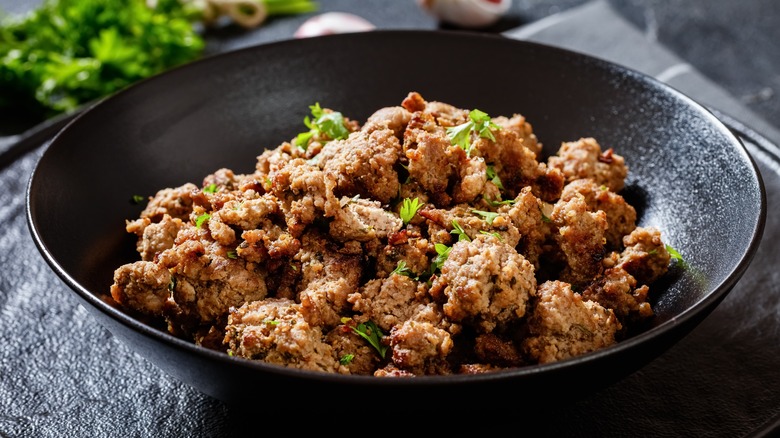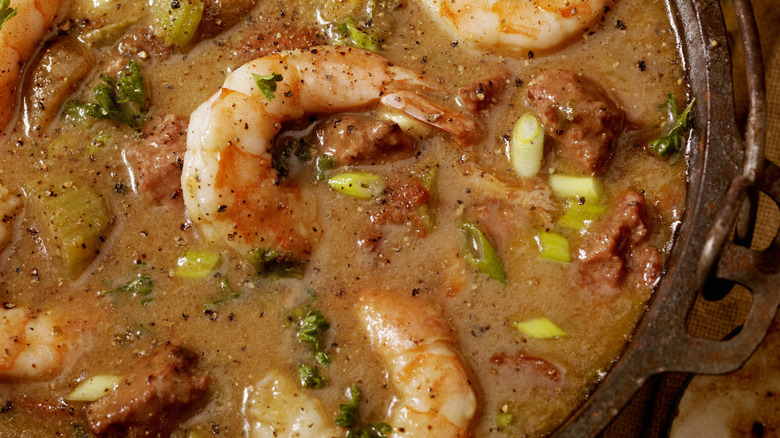The Best Way To Cook Hot Vs Sweet Italian Sausage
If you're figuring out how to cook Italian sausage, you'll likely go with a different method for ground vs. links. Or, you might adapt your cooking method to the recipe you're making — for instance, you'll heat all your ingredients together for a simple sausage gravy, but you'll cook your protein on its own for a sourdough sausage stuffing. But while both of these factors are important, you'll also want to consider the flavor of your Italian sausage before you start cooking.
According to Hunter Shoults, the plant manager at Bear Creek Smokehouse, you'll want to cook hot Italian sausage links differently from sweet. We'll take his word for it — not only is he in charge of all meat production at the smokehouse, but he's the son of Robbie Shoults, celebrity chef and third-generation owner of Bear Creek Smokehouse, Marshall Mercantile, and High Horse 1898. "It's best to caramelize anything sweet, in our opinion," Shoults said, "So pan-searing a sweet Italian sausage would be our go-to." All you have to do is heat your links over the stove at medium heat for up to six minutes (or until they turn brown), at which point you can add water and cover with a lid so they can steam.
How to cook hot Italian sausage
If you're making spicy Italian sausage, Hunter Shoults recommends a completely different tactic. "A hot [or] spicy Italian sausage would most likely be used as an additive to a main course, such as a soup [or] gumbo," he said. "So, slice into bite-size rounds and either cook in the soup (boil) or pan-sear first, then utilize the same pan with rendered fat to begin soup stock." If you're making gumbo in your slow cooker, you can simply add sausage slices right before you season everything and let it simmer. But if you're making it on the stove, just drop raw rounds in your pot about half an hour before the soup is done, or 10 minutes before for pre-cooked sausage.
Unfortunately, this method won't give you that brown, crispy crust you may be looking for. So, as Shoults suggests, pan-sear your links ahead of time if that's what you're after. Then to turn your rendered fat into stock, you'll want to pour it into your pot while it's still warm and hasn't solidified. Otherwise, you can save it for later by straining it through a cheesecloth, or dumping it straight into a jar that goes in the fridge.

